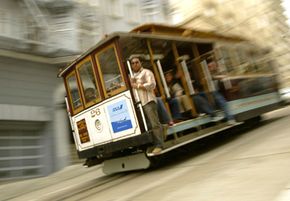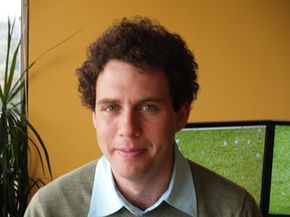It's a lovely day out, and you decide to go for a walk along the trolley tracks that crisscross your town. As you walk, you hear a trolley behind you, and you step away from the tracks. But as the trolley gets closer, you hear the sounds of panic -- the five people on board are shouting for help. The trolley's brakes have gone out, and it's gathering speed.
You find that you just happen to be standing next to a side track that veers into a sand pit, potentially providing safety for the trolley's five passengers. All you have to do is pull a hand lever to switch the tracks, and you'll save the five people. Sounds easy, right? But there's a problem. Along this offshoot of track leading to the sandpit stands a man who is totally unaware of the trolley's problem and the action you're considering. There's no time to warn him. So by pulling the lever and guiding the trolley to safety, you'll save the five passengers. But you'll kill the man. What do you do?
Advertisement
Consider another, similar dilemma. You're walking along the track again, you notice the trolley is out of control, although this time there is no auxiliary track. But there is a man within arm's reach, between you and the track. He's large enough to stop the runaway trolley. You can save the five people on the trolley by pushing him onto the tracks, stopping the out-of-control vehicle, but you'll kill the man by using him to stop the trolley. Again, what do you do?
Both of these grave dilemmas constitute the trolley problem, a moral paradox first posed by Philippa Foot in her 1967 paper, "Abortion and the Doctrine of Double Effect," and later expanded by Judith Jarvis Thomson. Far from solving the dilemma, the trolley problem launched a wave of further investigation into the philosophical quandary it raises. And it's still being debated today.
The trolley problem is a question of human morality, and an example of a philosophical view called consequentialism. This view says that morality is defined by the consequences of an action, and that the consequences are all that matter. But exactly which consequences are allowable?
Take the two examples that make up the trolley problem. On the surface, the consequences of both actions are the same: one person dies, five survive. More specifically, in both examples five people live as the result of one person's death. At first, both may seem to be justified, but most people, when asked which of the two actions is permissible -- pulling the lever or pushing the man onto the tracks -- say that the former is permissible, the latter is forbidden [source: Greene]. It reveals a distinction between killing a person and letting a person die.
Why is one wrong and another possibly allowable when both result in death? It's a question of human morality. If a person dies in both scenarios, and both deaths directly result from an action you take, what's the distinction between the two? Aside from that highly improbable moment when you actually find yourself near a big man and a runaway trolley and think, "Wow, I'm glad I read that article on HowStuffWorks," the trolley problem seems far-fetched. But philosophical questions like this have real-world implications for how people behave in society, governments, science, law and even war.
The trolley problem is based on an old philosophical standard called the Doctrine of Double Effect. Read about that on the next page.
Advertisement


